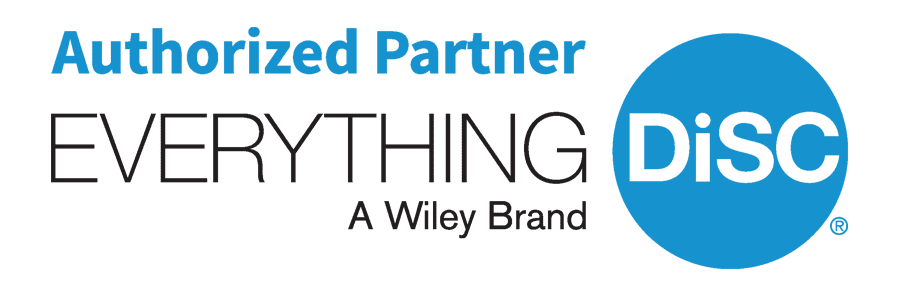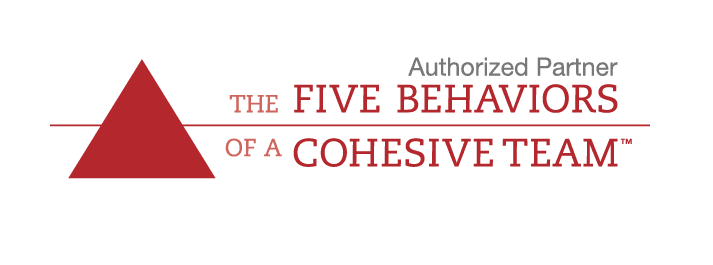Case Study: Teambuilding in an Insurance Organization with DiSC Classic and Wiley Profiles
Creating a cohesive and effective team of high performing individuals can be a challenge. Understanding individual strengths and weakness and playing off of each other creates a great team. DiSC Classic 2.0 and group reports make it easier to see what has always been there.
“I’m 100 percent planned but at least 50 percent flexible.”
This veteran consultant and trainer was emphasizing her belief that the best training programs reside in that space between firm foundation and powerful adaptability.
“We can’t just come in with a blank sheet of paper. We have to be prepared, but when something arises in the session and we go down a different path for awhile, it’s a good thing if it helps bring us to where we need to be.”
This trainer embraced this approach when she was hired to create both a management-training system and a teambuilding program for an organization that was undergoing major restructuring. Her client was an insurance company where the workers processed claims under tight deadline pressure.
From the start, it was obvious that the organization had severe morale problems. The picnic to launch the initiatives was a sparsely attended affair. The few employees who showed up were encouraged to mingle and get to know their colleagues. To the alarm of the event’s organizers, however, most picnickers just took their food back to their cars to eat by themselves.
“The picnic was a total bust. It showed that they didn’t trust each other.”
Once the trainer conducted her needs assessment, she uncovered additional issues. The lack of respect between employees and management was obvious, and the workers’ skepticism of company initiatives was deep.
The causes for the company’s problems included such familiar issues as unclear goals, different behavioral roles among the staff, and the employees’ lack of knowledge about their own behavioral styles. However, a less common factor was also complicating the employees’ lives: the fear of change. The workers were in denial about the company’s restructuring and the effect it would have on them.
“The workers insulated themselves and said, ‘I don’t have to listen to any of that, People just shut down, and when they were thrown into the restructuring, they were enraged.”
Her original goals, which were to develop the managers’ leadership abilities and improve the staff’s communication skills, were still paramount. But after she realized the depths of the organization’s problems and the underlying causes for the difficulties, she accepted the additional challenges of addressing the employees’ fears, eliminating their denial, and getting them to work together.
To design her programs, the trainer brainstormed with a development team that was a composite of all layers of the organization’s management. By exploring potential solutions with the team, she made sure that goals had proper priority over any specific system.
Participants better comprehended their own motivations and behavior, and they identified possible causes for miscommunication among themselves.
“I said, ‘Let’s look at what you need and how your data flushes out.’ I didn’t say, ‘Let’s just do 16 sessions,’ ” Participants better comprehended their own motivations and behavior, and they identified possible causes for miscommunication among themselves.
With her dual training tracks plotted out, she embedded DiSC® Classic as the cornerstone of her solution. Even with that sturdy base, however, she saw the need to utilize other tools if she hoped to achieve her goals. So she added the Time Mastery Profile® and Team Dimensions Profile to the curriculum.
“DiSC is a great tool, but it can’t solve every single challenge. It’s not the Swiss Army knife of everything you need in life.”
At the first teambuilding session, the trainer began to work through her well-structured, comprehensive session that was 100% planned. Despite her wealth of knowledge and experience, however, it soon became apparent that the participants were not prepared to learn. They had carried too much of their own tension into the room. So she became 50% flexible.
“I had to call a timeout just to address all their concerns. We talked. And if I couldn’t answer their questions right then, I promised to talk to people in the company and find out the answer for them.”
The trainer followed through on her promise, which helped the participants relax and become more open to her training. In addition, her efforts earned her credibility with the participants and provoked them to become more accountable for their learning.
With distractions thus minimized, she introduced the employees to the DiSC model. The insights that DiSC provided were extraordinary, but even more important was the fact that the participants could now employ a common language for the remainder of the training. The power of the model cannot be overemphasized.
“DiSC is the biggest ‘ah-ha’ that we get. And it weaves very well into other modules and tracks.”
To supplement the teambuilding track, she brought in the Team Dimensions Profile. Participants learned about the Z-Process and their preferred roles, which were helpful insights that doubled as catalysts for constructive discussions about effective teamwork and productive environments. The point was to get participants to think about each other as vital members of a cohesive team rather than as barriers.
Similarly, the trainer strengthened the management-training track by having the participants take the Time Mastery Profile. By showing the managers how their prioritization skills directly influenced their competency, she ensured that the instrument’s results were not lost on them.
“The insights that Time Mastery provides are common sense but not common practice. People forget about doing these simple things.”
The trainer believed that the multiproduct approach added depth to the learning process, and she admits that the sessions with assessments created the most enthusiasm among participants in the tracks. She says that different instruments broadened participants’ perceptions, making it easier to reach the goal of effective facilitation.
“We don’t have to know it all, but we do have to be good facilitators. We have to get the issues out with clarity and make it possible to get answers.”
The answers that the trainer helped the employees reach had long-term benefits. Participants better comprehended their own motivations and behavior, and they identified possible causes for miscommunication among themselves. In fact, some participants took the training so much to heart that they even applied their new skills to their personal lives, learning how to resolve conflict with their spouses, children, or friends.
As a result of the improved communication and enhanced teamwork, conflict and stress at the organization decreased. And more important, the morale of the workers surged.
“Today, you can feel the increased energy when you’re walking down the halls. It’s a different organization.”
Perhaps the most striking proof of success came when the organization held a graduation party for everyone who had been through the full training. In contrast to the disastrous picnic that had launched the programs, the party featured almost full attendance with active engagement and interaction among the employees. The workers finally saw one another as valuable colleagues rather than as obstacles. They saw the need for better communication and effective teamwork.
And best of all, no one took their food back to their cars.
Download PDF of Case Study: Teambuilding in an Insurance Organization with DiSC Classic .
Products Used





![]()
Related Case Study
Using Everything DiSC Management and Comparison Reports with a Leadership Team
Communication problems, interpersonal conflicts and trust issues for leadership team are improved using the Everything DiSC Management Profile and Comparison Reports.
Research Report
From DiSC® Classic To Everything DiSC®
How My Graph Became a Dot.





